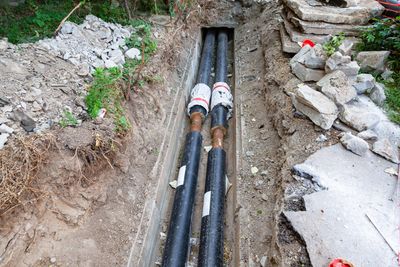SMOKE AND DYE TESTING

Why is Smoke and Dye Testing Conducted?
Smoke and Dye Testing is required by the Consent Order and Agreement from Pa DEP, a copy of which is on this website under the rules and regulations. Smoke and Dye testing and pressure testing are both used to reduce the amount of storm water entering the system and being treated at the sewer treatment plant.
A large percentage of material entering the sewer treatment plant during rainfall events is storm water. By reducing the amount of storm water entering the plant the cost of the future sewer treatment plant is greatly reduced.
The Authority is required to construct a new sewer treatment plant by 12-31-2037
The Purpose
Smoke testing involves injecting non-toxic smoke into the sewer lines to detect leaks and illegal connections where stormwater might be entering the sanitary sewer.
Dye testing is used to verify that stormwater drainage systems (gutters, downspouts, driveway drains, etc.) are not connected to the sanitary sewer system.
The Process
The Authority will introduce smoke into the sewer system, and the smoke will exit through any openings where there is a connection to the outside, such as downspouts, yard drains, or cracks in the sewer line.
A non-staining, non-toxic dye is flushed through the stormwater drains. If the dye appears in the sanitary sewer system (e.g., at a downstream manhole), it indicates an illegal connection.
What to Do if Smoke Enters Your Home
If smoke enters your home, it indicates a potential problem with the sewer line or a cross-connection, and it's recommended to contact a plumber for further inspection and repair.
Enforcement
The first round of enforcement has been completed. The second round of enforcement is underway. Please work with the Authority to comply. Noncompliance has a direct negative impact on all rate payers.
Contact Us
If you have any questions or concerns , please do not hesitate to contact us.
This website uses cookies.
We use cookies to analyze website traffic and optimize your website experience. By accepting our use of cookies, your data will be aggregated with all other user data.